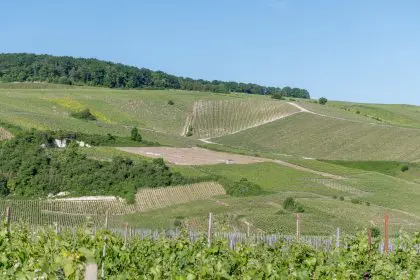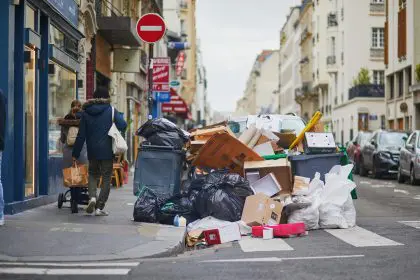New Orleans thrives on its vibrant culture, from jazz-filled streets to Creole kitchens, but in 2025, getting around the city has become a daily grind for many. Traffic jams, aging infrastructure, and spotty transit options turn routine commutes into tests of endurance.
1. I-10 Eastbound: A morning bottleneck
The stretch of Interstate 10 heading east from downtown to New Orleans East kicks off many workdays with frustration. Morning rush hour, peaking between 7 and 9 a.m., sees bumper-to-bumper traffic as commuters funnel toward offices and industrial hubs. In 2025, ongoing road repairs, sparked by 2024’s hurricane season damage, narrow lanes and extend delays—trips that once took 20 minutes now stretch to 45. For families earning the city’s median income of $48,000, gas costs, up 5% from last year, bite harder with each idle minute.
The toll goes beyond time. Parents miss school drop-offs, and shift workers burn through precious rest. Some cope by leaving home at dawn, sipping coffee in parking lots to beat the rush. Others carpool, splitting fuel costs and swapping stories to ease the grind. Community apps buzz with real-time traffic tips, helping drivers dodge the worst snarls. Despite the strain, these small acts of ingenuity keep spirits afloat, even as horns blare in the morning haze.
2. Causeway Bridge: A lakefront ordeal
The 24-mile Lake Pontchartrain Causeway, linking Metairie to Mandeville, ranks among the world’s longest bridges—and toughest commutes. Daily travelers face unpredictable delays, especially when fog or rain, common in 2025’s wet spring, slows speeds to a crawl. Tolls, now $5 each way, add $50 weekly for regular commuters, a burden for teachers and healthcare workers with modest salaries. Accidents, up 8% since 2023 due to distracted driving, can trap drivers for hours.
Life adjusts around the bridge’s demands. Families skip evening outings to avoid late returns, and kids’ bedtimes shift as parents inch home. Some drivers lean on podcasts or audiobooks to pass time, turning cars into makeshift libraries. Others join vanpools, cutting costs and emissions while building camaraderie. Online forums share weather updates, helping commuters plan safer trips. These efforts soften the Causeway’s sting, preserving a sense of control in a chaotic routine.
3. Canal Street: Streetcar and traffic tangle
Canal Street’s historic charm draws tourists, but for locals commuting through its heart, it’s a patience-tester. The streetcar line, while scenic, runs on shared roads, stalling behind delivery trucks and ride-share drop-offs. In 2025, construction for a new transit hub disrupts flow, with detours adding 15 minutes to trips between Mid-City and the French Quarter. Bus fares, up 10% to $1.50, strain low-income riders, who make up 30% of transit users.
The grind reshapes days. Retail workers arrive late, burning wages to cover parking when buses lag. Parents juggle childcare as schedules slip, and students miss morning classes. To adapt, some switch to biking, dodging potholes on side streets. Others use transit apps to track streetcars, timing exits to shave minutes. Community boards push for better bus lanes, though progress lags. These small wins—bike racks added, apps downloaded—keep hope alive amid the daily slog.
4. Westbank Expressway: A suburban snarl
The Westbank Expressway, connecting Gretna to downtown via the Crescent City Connection bridge, chokes daily with suburban commuters. Morning and evening peaks turn the six-mile trip into a 40-minute ordeal, worsened by 2025’s bridge maintenance, which cuts lanes. Fuel costs, averaging $3.50 per gallon, hit hard for families driving SUVs, common in this car-reliant area. Congestion spikes toll fees for express lanes, now $3 during rush hours.
The impact ripples. Kids wait longer at daycare as parents crawl through traffic, and dinner plans shrink to takeout. Some drivers experiment with off-peak hours, starting work at 6 a.m. to dodge jams. Carpool apps gain traction, linking neighbors to share rides and costs. Local radio stations dedicate segments to traffic updates, a lifeline for planning routes. These tweaks, born of necessity, weave connection into a commute that tests patience but can’t dim community spirit.
5. Chef Menteur Highway: A neglected stretch
Chef Menteur Highway, winding through New Orleans East, serves workers in retail and logistics but delivers daily headaches. Potholes, worsened by 2025’s heavy rains, jolt cars and slow traffic, stretching 10-mile trips to 30 minutes. Poor lighting and uneven shoulders raise safety fears, with accidents up 12% since 2023. For low-wage earners, vehicle repairs—averaging $500 per incident—cut into rent money, a stark hit in an area where 40% live below the poverty line.
Life bends to the road’s flaws. Parents skip errands to avoid breakdowns, and night-shift workers dread dark drives. Some invest in rugged tires, a costly fix at $200 per set. Others band together, sharing rides to split maintenance bills. Community petitions for road upgrades gain signatures, though funding stalls. These efforts, from tire swaps to grassroots campaigns, reflect a resolve to reclaim ease in a commute that wears thin.
6. St. Claude Avenue: Urban gridlock grows
St. Claude Avenue, linking the Bywater to the Lower Ninth Ward, pulses with New Orleans’ artistic soul but stalls with urban congestion. In 2025, gentrification fuels traffic as new cafes and lofts draw cars, turning five-mile trips into 25-minute slogs. Stoplights, poorly synced, halt flow, and bike lanes, while growing, squeeze space for buses. Transit riders face $1.75 fares, up 15% in two years, pinching artists and service workers.
The commute’s toll mounts. Freelancers lose gig hours stuck in traffic, and families cut outings to save gas. Some embrace e-bikes, weaving past jams but risking uneven pavement. Others sync schedules with neighbors, carpooling to gigs or markets. Social media groups share detour tips, building virtual support. These adaptations—bikes bought, chats joined—turn frustration into action, keeping St. Claude’s creative spark alive despite the gridlock.
7. Airline Highway: A commercial crush
Airline Highway, threading Metairie to Kenner, serves airport workers and mall employees but buckles under commercial traffic. In 2025, delivery trucks and ride-shares clog the route, stretching 15-minute drives to 40 during rush hours. Gas stations, charging $3.60 per gallon, strain budgets for commuters earning $35,000 annually, common in service jobs. Roadwork, tied to a new logistics hub, adds detours, with completion delayed to 2026.
Daily life frays. Workers skip breaks to clock in, and parents rush to after-school pickups. Some shift to scooters, dodging traffic but braving heat. Carpool networks expand, linking coworkers to cut costs. Local apps map shortcuts, saving minutes. These moves—scooters parked, apps checked—show grit, turning a punishing commute into a shared challenge where small victories matter.
The wider strain
New Orleans’ commute woes reflect deeper currents. Infrastructure funding, down 10% federally since 2023, delays road and transit upgrades, leaving potholes and bottlenecks to fester. Inflation, at 3.9% in 2025, lifts fuel and fare costs, hitting hardest in a city where 25% of households earn under $30,000. Urban growth, with 5,000 new residents since 2022, clogs streets as housing lags, forcing longer drives from suburbs. Car dependency—80% of commuters drive—worsens jams, with public transit serving just 15% of trips.
The human cost runs deep. Time lost to traffic steals family dinners, hobbies, or rest, while budgets bend under gas and repairs. Yet, New Orleans’ heart beats on. Commutes, though grueling, foster ingenuity—neighbors share rides, apps cut delays, and petitions gain steam. These seven routes test resolve, but they also reveal a city that moves forward, one determined step at a time.
Pushing through
The struggle of these commutes doesn’t define New Orleans—it sharpens its resilience. Locals adapt, from dawn departures to bike-lane dashes, carving paths through chaos. Each route, with its snarls and costs, tells a story of endurance, where communities lean on each other to keep going. As 2025 unfolds, these commuters hold fast, navigating tough roads with a spirit that echoes the city’s unbreakable rhythm.












